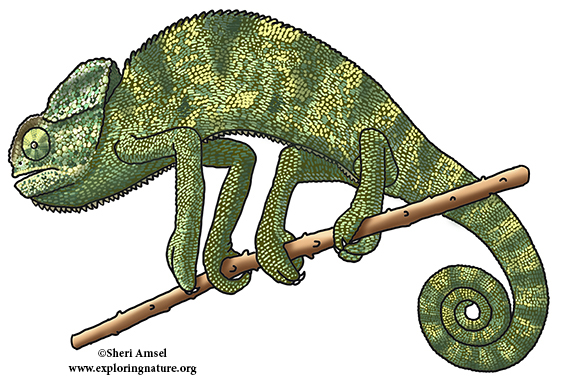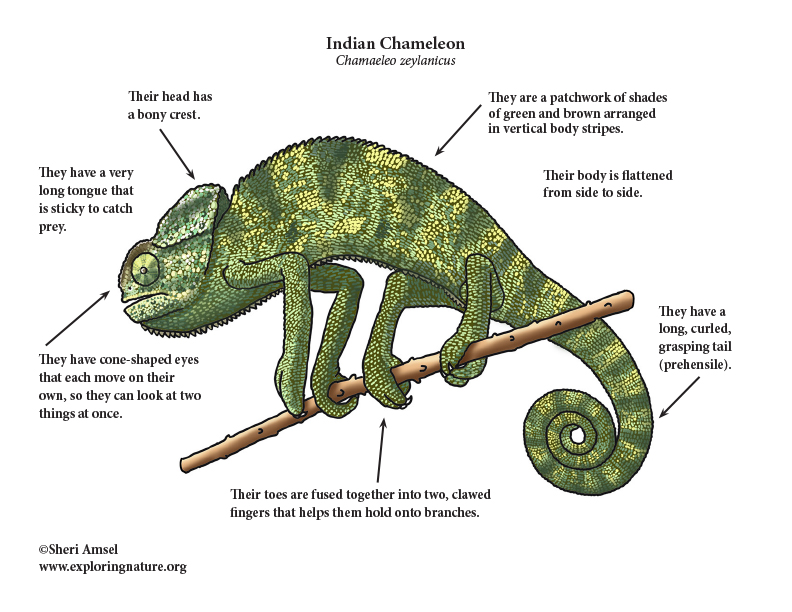

They are found in India, Sri Lanka, and around South Asia.
They live in the trees (arboreal).
They are a patchwork of shades of green and brown arranged in vertical body stripes. If you look at them closely, you can see their colors are made up by thousands of granular scales. Their head has a bony crest and they have cone-shaped eyes that each move on their own, so they can look at two things at once. They have a very long tongue that is sticky to catch prey. Their body is flattened from side to side. Their toes are fused together into two, clawed fingers. This helps them hold onto branches. They have a long, curled, grasping tail (prehensile).
Their skin can change color when the temperature or light changes or if they are alarmed or aggressive (communication). They move slowly, watching for prey. They move with a bobbing motion.
They eat insects and other small invertebrates.
Females lays up to 30 eggs in a hole she has dug in the ground. The eggs will hatch in about 90 days with the hatchings digging themselves out of the soil. Their is no parental care.
Kingdom: Animalia
Phylum: Chordata
Class: Reptilia
Order: Squamata
Suborder: Iguania
Family: Chamaeleonidae
Genus: Chamaeleo
Species: C. zeylanicus
When you research information you must cite the reference. Citing for websites is different from citing from books, magazines and periodicals. The style of citing shown here is from the MLA Style Citations (Modern Language Association).
When citing a WEBSITE the general format is as follows.
Author Last Name, First Name(s). "Title: Subtitle of Part of Web Page, if appropriate." Title: Subtitle: Section of Page if appropriate. Sponsoring/Publishing Agency, If Given. Additional significant descriptive information. Date of Electronic Publication or other Date, such as Last Updated. Day Month Year of access < URL >.
Amsel, Sheri. "Chameleon (Indian)" Exploring Nature Educational Resource ©2005-2024. December 14, 2024
< http://www.exploringnature.org/db/view/Indian-Chameleon >

